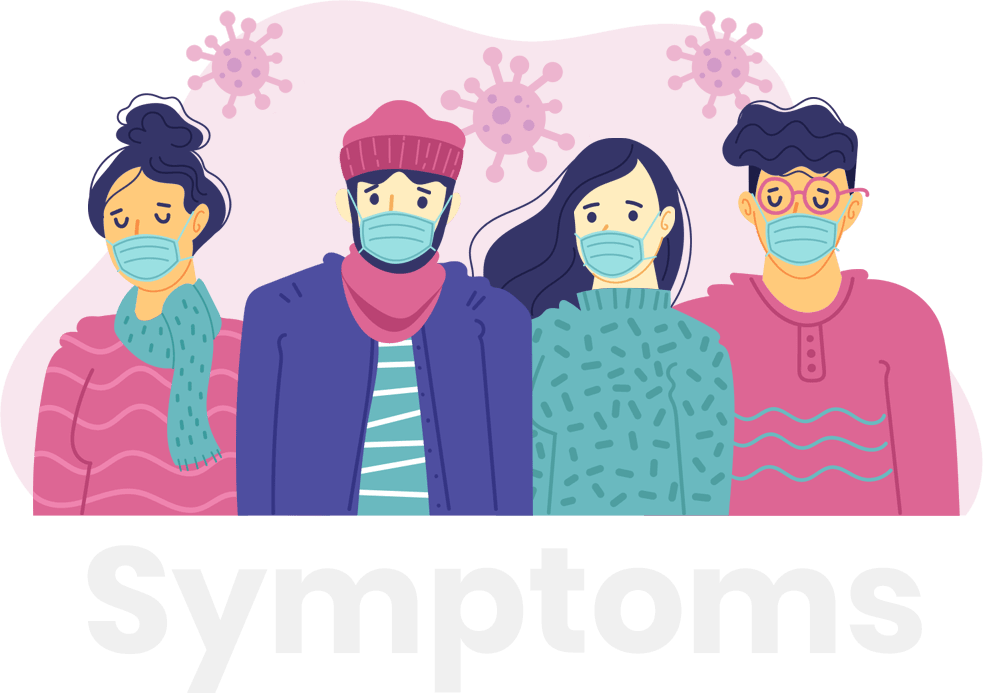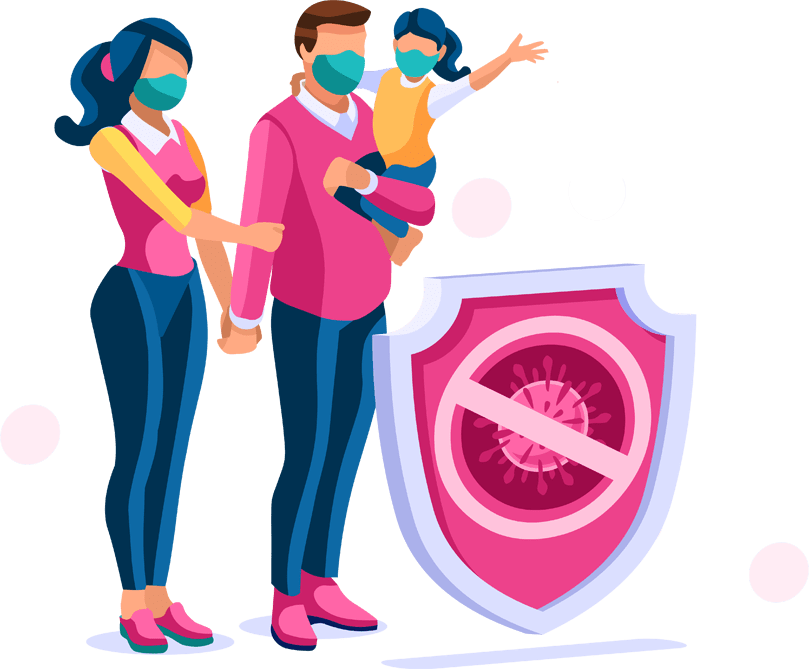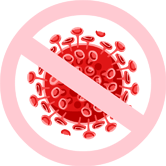



about COVID-19
Coronavirus Disease 2019 (COVID-19)
Coronavirus Disease 2019 (COVID-19) People may experience sudden fever or chills, cough, shortness of breath, loss of taste or smell, and other symptoms. Use viral tests like PCR or rapid at-home tests to determine if you are sick with COVID-19. Learn when and how to get tested. Antiviral medications are available to treat mild to moderate COVID-19.
The best way to prevent illness is to avoid being exposed to this virus.
-
Clean and disinfect frequently touched surfaces
-
Avoid touching your eyes, nose, and mouth
-
Clean your hands with a hand sanitizer
-
Cover coughs and sneezes
-
Stay home if you’re sick
-
Wear a facemask if sick
-
Cover your mouth and nose
-
Throw used tissues in trash
-
Ensure solution has at least 70% alcohol
Signs & Symptoms
COVID-19 Signs and Symptoms
Important Reminders

Prevention COVID-19
How to Protect Yourself?
If you are healthy, you only need to wear a mask if you are taking care of a person with suspected COVID-19 infection.


















